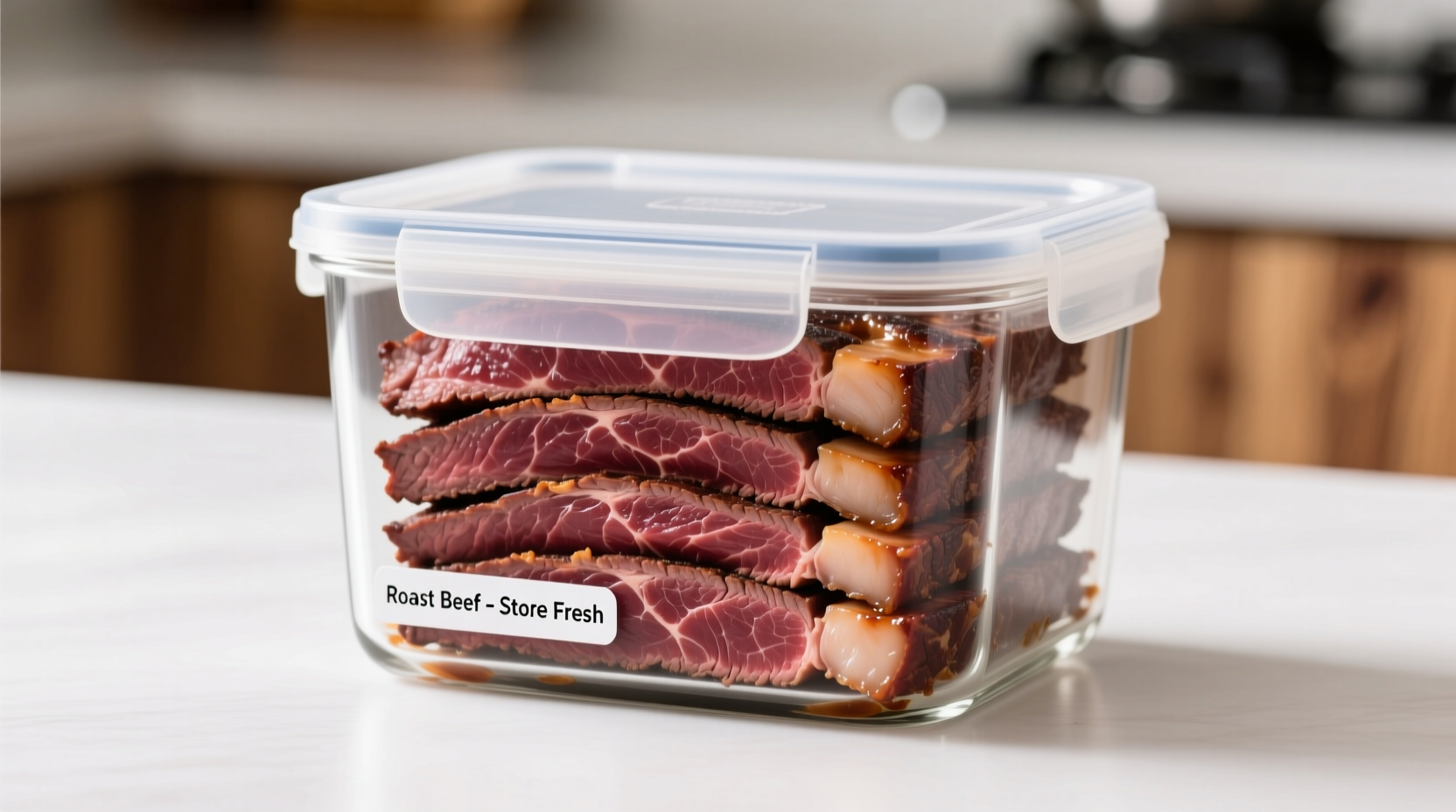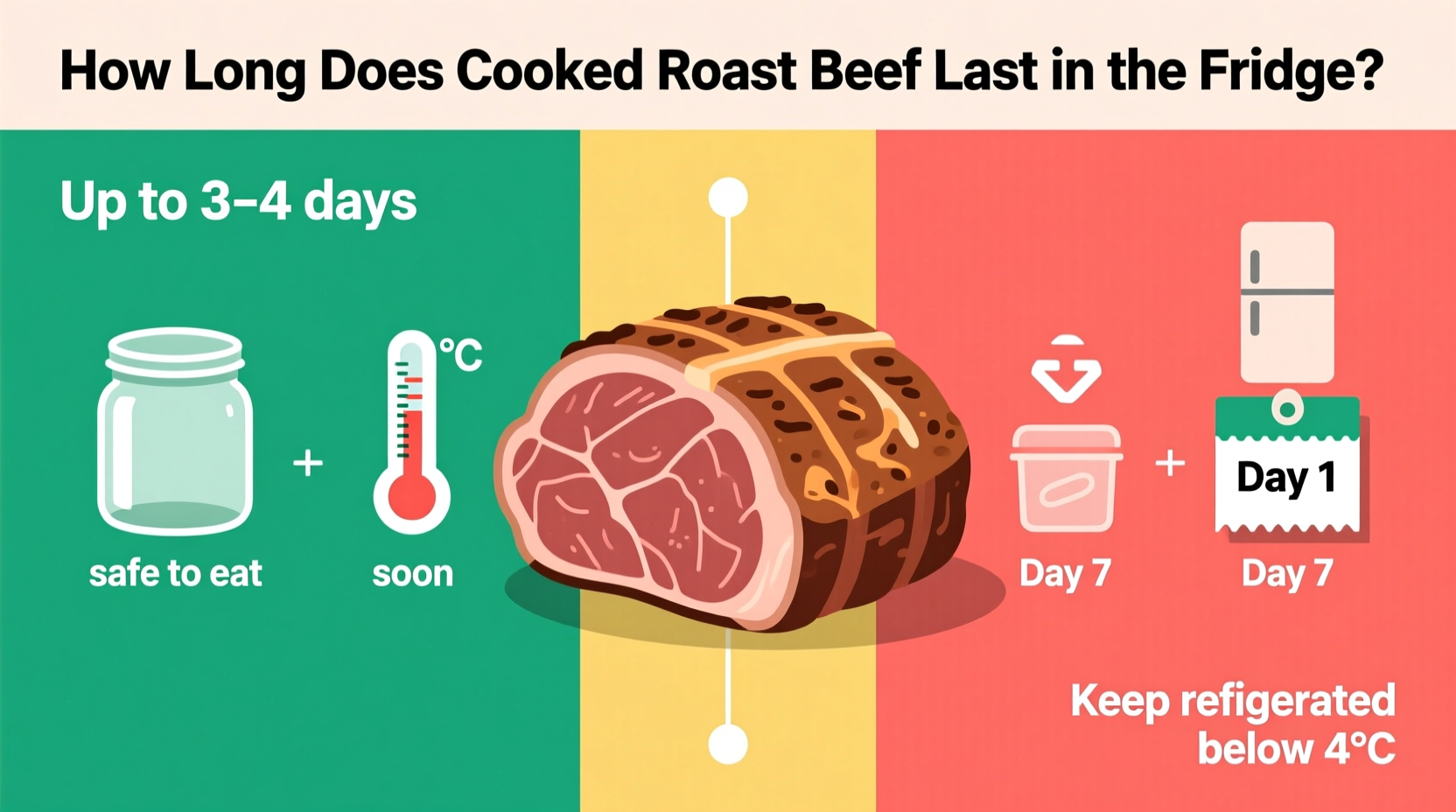Understanding exactly how long your leftovers stay fresh isn't just about avoiding waste—it's a crucial food safety practice that protects you and your family from potential illness. As professional chefs know, proper storage transforms leftovers from a convenience into a delicious second meal.
Why the 3-4 Day Rule Exists: Science Behind Food Safety
The USDA Food Safety and Inspection Service clearly states that cooked beef products maintain safety for 3 to 4 days under proper refrigeration. This timeframe isn't arbitrary—it's based on bacterial growth rates in the "danger zone" between 40°F and 140°F (4°C-60°C).
During my years working in professional kitchens, I've seen how quickly bacteria like Staphylococcus aureus and Clostridium perfringens can multiply in cooked meats left at unsafe temperatures. The FDA Food Code emphasizes that ready-to-eat foods like roast beef should never exceed this 4-day refrigeration limit to prevent foodborne illness.
| Cooked Meat Type | Refrigerator Storage (40°F or below) | Freezer Storage (0°F or below) |
|---|---|---|
| Cooked roast beef | 3-4 days | 2-3 months |
| Cooked poultry | 3-4 days | 4 months |
| Cooked fish | 3-4 days | 3 months |
| Leftovers with gravy | 1-2 days | 1-2 months |
Source: USDA FoodSafety.gov guidelines updated September 2025
Maximizing Freshness: Professional Storage Techniques
How you store your roast beef dramatically impacts whether it reaches the full 4-day window. Follow these chef-tested methods:
- Cool rapidly—Divide large portions into smaller containers to cool within 2 hours of cooking (1 hour if room temperature exceeds 90°F/32°C)
- Air-tight containers—Use glass or BPA-free plastic containers with secure lids, or wrap tightly in heavy-duty aluminum foil
- Refrigerator placement—Store on middle shelves where temperature is most consistent, never in the door
- Temperature verification—Use a refrigerator thermometer to confirm your appliance maintains 40°F or below
Remember that proper cooling before refrigeration prevents condensation that accelerates spoilage. I've seen many home cooks make the mistake of placing still-warm roast beef directly in the refrigerator, creating a breeding ground for bacteria.

When in Doubt: Recognizing Spoilage Signs
While the 3-4 day rule provides a safety net, always check for these spoilage indicators before consuming leftovers:
- Visual changes—Grayish color, slimy film, or unusual mold growth
- Odor test—Sour, ammonia-like, or generally unpleasant smell
- Texture—Excessively dry or sticky surface
The USDA's "When in doubt, throw it out" principle applies here. No amount of reheating can eliminate toxins produced by certain bacteria once they've multiplied to dangerous levels.
Extending Shelf Life: Freezing Leftover Roast Beef
When you can't finish your roast beef within 3-4 days, freezing preserves both safety and quality:
- Slice beef before freezing for quicker thawing
- Use vacuum sealing or remove as much air as possible from freezer bags
- Label packages with contents and date
- Thaw in refrigerator overnight—never at room temperature
Frozen roast beef maintains best quality for 2-3 months. While technically safe beyond this, flavor and texture degrade over time.
Situations That Shorten Shelf Life
Certain conditions reduce the standard 3-4 day window:
- Temperature fluctuations—Opening refrigerator frequently or power outages
- Leftovers with sauces—Gravies and moist sauces create more favorable bacterial environments (consume within 1-2 days)
- Improper cooling—Leaving roast beef at room temperature longer than 2 hours
- Cross-contamination—Using the same utensils for raw and cooked meat
During holiday seasons, I've observed many households mistakenly believe large roasts stay fresh longer due to their size—exactly the opposite is true. Larger portions take longer to cool, spending more time in the danger zone.
Food Safety for Special Diets and Vulnerable Groups
For pregnant women, elderly individuals, or those with compromised immune systems, consider reducing the storage window to 2-3 days. The CDC recommends extra caution with meat products for these vulnerable populations.
Practical Leftover Planning
Smart meal planning prevents waste while ensuring safety:
- Portion leftovers immediately after cooking
- Designate a "use first" section in your refrigerator for leftovers
- Create a weekly meal plan incorporating leftovers
- Transform roast beef into new dishes like sandwiches, salads, or stir-fries
Understanding how long cooked roast beef lasts in the refrigerator empowers you to enjoy delicious meals safely while minimizing food waste. This knowledge forms the foundation of responsible home food safety practices.











 浙公网安备
33010002000092号
浙公网安备
33010002000092号 浙B2-20120091-4
浙B2-20120091-4